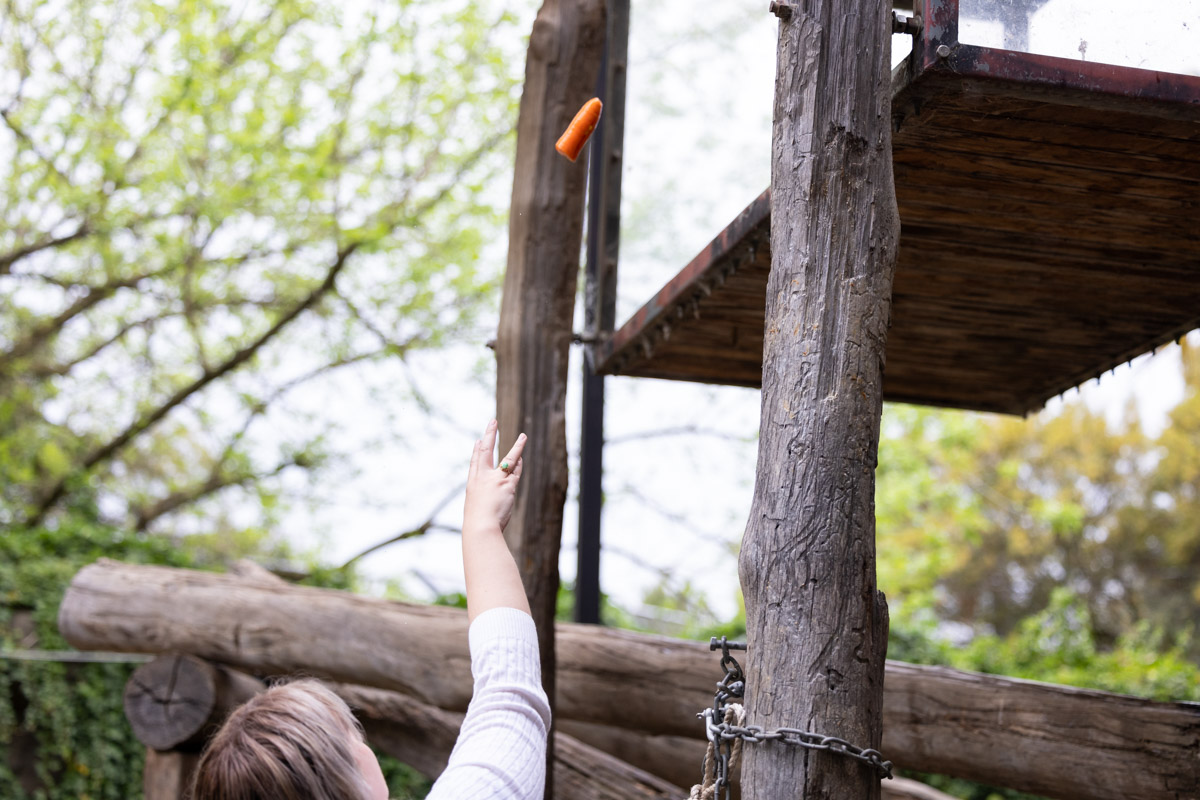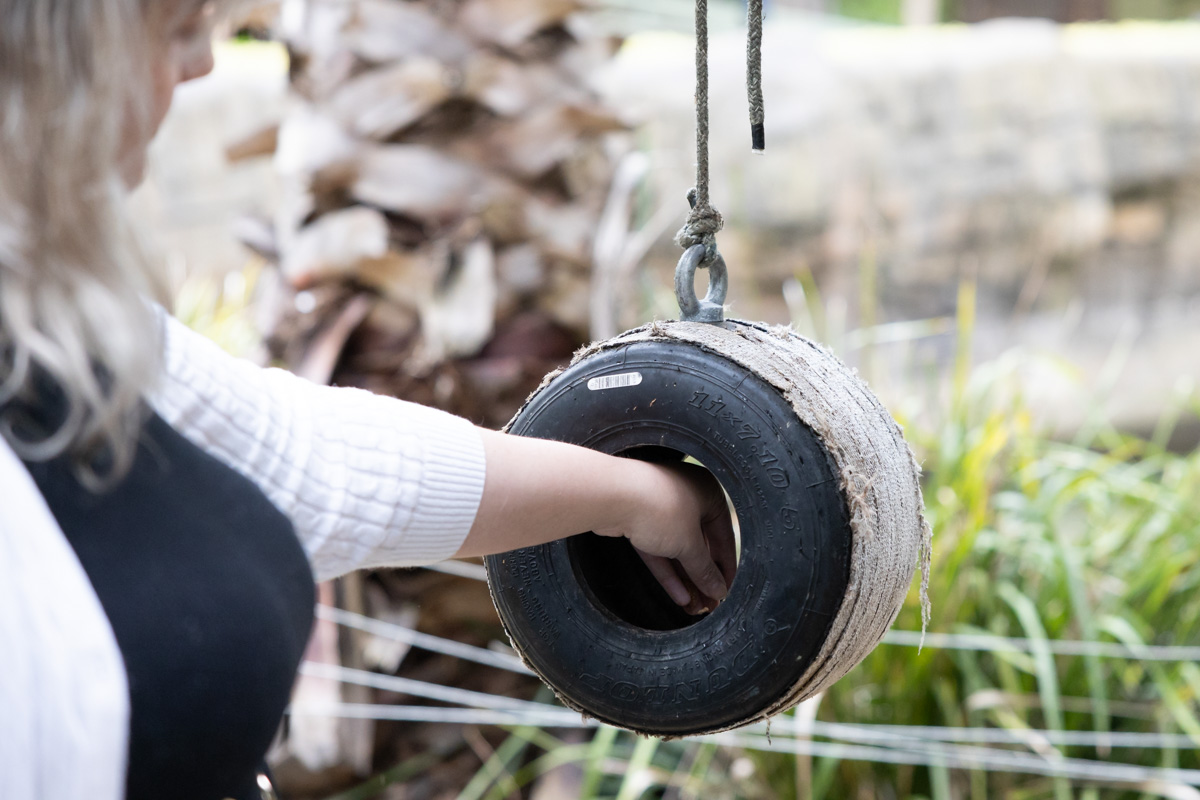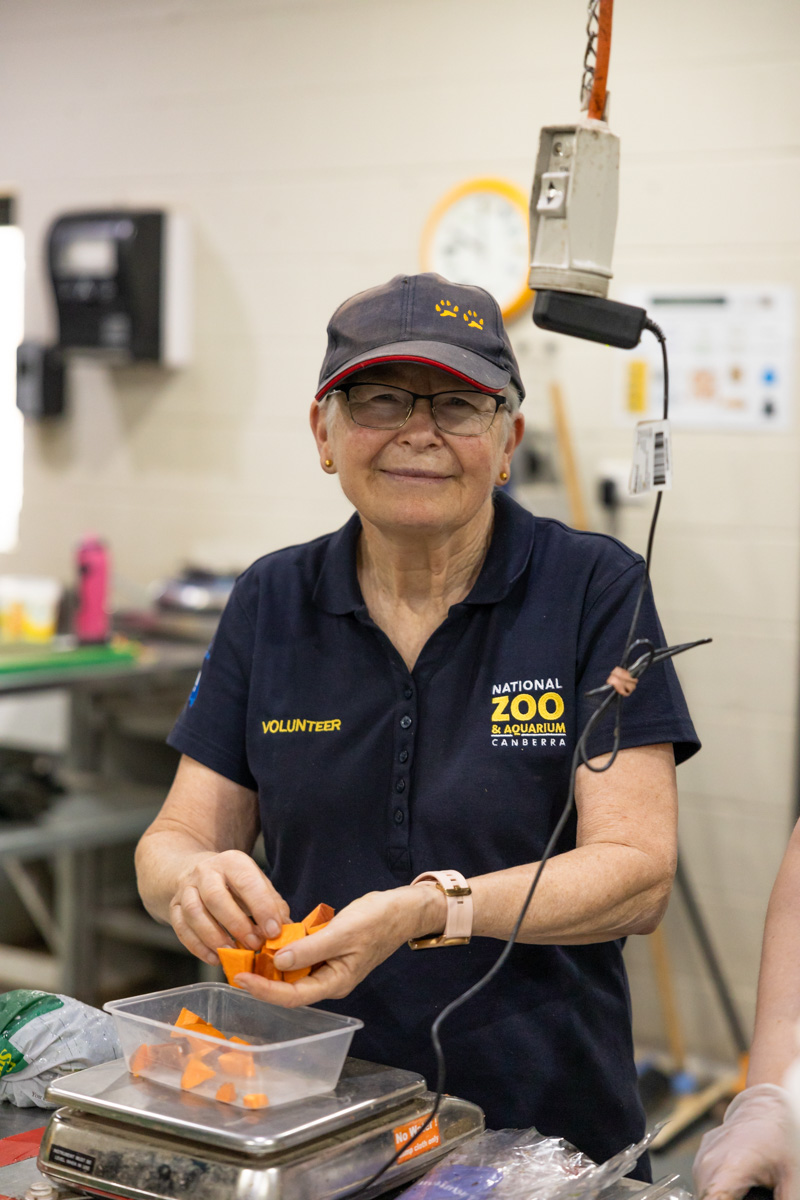Who doesn’t love a trip to the zoo – the chance to see exotic, endangered and homegrown animals up close and enjoying their habitats? But have you ever thought about all the work that goes on behind the scenes? This week marked International Zookeeper Day (4 October) and CW was invited to Canberra’s own National Zoo & Aquarium to see what a day in the life of a zookeeper looks like.

So much more than pooper scoopers or cuddlers, the role of a zookeeper at the National Zoo ensures that the needs of creatures great and small are met each and every day.
The day starts hours before the zoo opens with all enclosures needing to be checked, ensuring nothing was damaged overnight. Then it’s time for the most important meal of the day, breakfast, which looks different from species to species. We got to help set up the sun bear’s morning meal.
“They are probably the most dangerous animal in the zoo. The reason being they are the smallest bear species but are the most aggressive species. We say they have little bear syndrome; they definitely have bigger boots than what they think they do,” says Jemma Walsh, zookeeper.
Being as intelligent as primates means that the bears need enrichment with every feed in ways that replicate their natural behaviours, so foraging for their meals. Their food is delivered through puzzle balls and hidden nooks and crannies around the enclosure, always in a different spot. The toys are changed each week to keep the animals engaged and interested. Enrichment differs in delivery between species and some animals have their own preferences.



“It could be a different type of enrichment every day,” says Siobhan Block, zookeeper. “It could be a tactile enrichment sheet, a ball like this or even soft toys, something that is different to the natural environment. It could be audiovisual – it could be animal noises or music; a lot of animals love classical music, particularly our penguins. They actually sit there and listen to it.
“We have a harp player that comes to zoo a lot to just play for the animals.”
Bear team leader, Siobhan started out as a volunteer, like 60 per cent of the zookeepers here. Back in 2014, Siobhan met and fell in love with the European brown bears that resided at the zoo. Deciding to start volunteering that day, she drove from Albury to Canberra every week for a year until she was offered a permanent position. Working her way up through the species, Siobhan now spends three days a week with the bears and another two with cheetahs and small carnivores.
“Bears are classed as a code one dangerous animal, so it is definitely not a beginner position. Generally, we would start at something a little bit less on the dangerous side, some of our smaller carnivores are perfectly reasonable to start with – our meerkats, otters, red panda … Security is obviously a big, big thing that we pay attention to, so making sure new staff members are across that before we move onto more tricky animals,” says Siobhan.



The goal isn’t always a dangerous animal; different keepers have different interests, like the team leader for birds, Brendan Sheean. Knowing he wanted to work in a zoo as a young child, he says who wouldn’t want to work with birds – they’re the closest thing to dinosaurs.

“They’re very intelligent, especially when you start working with your parents and your raptors. It gives you this unique challenge and they’re all full of personality too, it’s a lot of fun … Some might like you, some might not, which means you might have to work on the relationship a little bit better and they also really respond to training,” says Brendan.
Training is an essential part of every day for all the animals at the zoo, as it stimulates their minds and helps condition the animals for any health checks and veterinary work. Brendan says rather than keepers having to restrain the animals, which can be stressful for everyone, they will come voluntarily (with a reward of course).
“We are training our Red-tailed blacks [cockatoos] to open their wings so we can actually have a look at their feather condition to see if there is any damage. Rather than us having to open it for them, they just lift it up, all by giving them a command. To make it very positive for them, we give them a little treat,” he explains.
This training also helps with the weighing process, which happens each fortnight to monthly, unless the animal is elderly or sick when it becomes almost a daily occurrence.
“The weights for a lot of species help us determine their body condition. If they’re healthy, if they’re taking on all of the nutrients that they need to. For things like birds, it’s really the only way we can tell if they’re sick,” Jemma says.



However, like us, many of the animals aren’t huge fans of jumping on the scales, such as Oumak, the tree kangaroo.
“Oumak will do everything in her power to not go on scales, to the point that I literally have to put the scales in there, put all of her food behind the scales and hide,” smiles Jemma.
Collaboration is key when it comes to training. Sometimes it might take a couple of people to weigh smaller animals – one to distract and one to do the weighing. Learning from those around you is a key part of being a successful keeper, says Tosh Leahy, particularly when moving to a new species.
“Because you’re a zookeeper for ten years doesn’t mean you know everything about otters,” Tosh says. “You do rely on the people that do know to teach you the species. Training in itself is pretty generic around all the terminology.”



Having grown up watching Steve Irwin on television, Tosh had his heart set on feeding saltwater crocs, just like the Aussie icon. While he hasn’t had the opportunity to do that just yet, he has fallen in love with caring for exotic mammals and small carnivores, like the otters.
“Otters are the most fun to train because they are so intelligent and interactive, it’s a lot of fun running them up and down, making sure you’re not stepping on them. You really feel like you’re a part of the session training them,” says Tosh.
Working her way up to zookeeper, Jemma started as a barista and was persistent in her volunteering and dedication to the role. While most keepers have a Certificate III in Captive Animals, Ms Walsh says the majority of their training comes on the job.
“Just keep pushing, is my only advice; keep trying, and get into volunteering, if you can. It is somewhat of a competitive industry because everyone loves it … If you really want to be a zookeeper, get into the industry – start as a barista, start in maintenance, and work out if it’s the place for you,” Jemma says.
The volunteers are vital to running of the zoo. They help with the cleaning and do a huge portion of meal prep which can take up hours of the day.

“A lot of zookeepers actually come from our volunteer pool,” Jemma says. “The majority of the keepers at this facility, we’re very proud to have risen up through the volunteer program. They start doing that or start in junior zookeeper and get recognised and trained and nurtured through that program.”
According to Jemma, the other 40 per cent are generally external recruitments from other facilities. She says it is important to have new faces come through as they often bring great ideas they’ve seen implemented elsewhere.
Jemma says zoos have changed a lot in the past few decades; especially here in Australia, they are targeted toward conservation and supporting wild populations. The role of a zookeeper is also that of gardener, maintenance worker, builder, educator and conservationist.
“Our job is to inspire the next generation of people to come and better protect the environment than the generations before us. That’s what we’re all here for; we want to make sure that these beautiful creatures stick around … Of course, we’d love to see animals in the wild but we need these guys here as those conservation and education animals to be able to help,” she says.
Visit the nationalzoo.com.au for more information on volunteering and ways to get involved.
Canberra Daily would love to hear from you about a story idea in the Canberra and surrounding region. Click here to submit a news tip.



